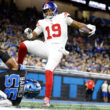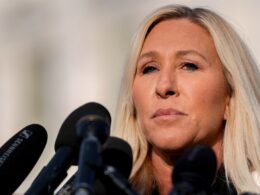It’s time for the Knicks to put more on Karl-Anthony Towns’ plate. With Jalen Brunson sidelined and no clear timetable for his return, New York’s ability to survive another three-game road trip may depend on tapping into the offensive upside of their most talented player.
Brunson is the Knicks’ heartbeat — a 27-point scorer and the central figure in Mike Brown’s new read-and-react system. But Towns is the matchup nightmare: a 7-footer who can shoot it, create off the bounce and, at times, pass like a guard. And through the first month of the season, the Knicks haven’t come close to maximizing that skill set.
Towns’ 20.2 points per game are his lowest since his rookie year. His 14.8 shot attempts per game are near a career low. His efficiency — 42.9% from the field, 32.7% from three — would be the worst of his career. For a $171 million cornerstone, that’s not nearly enough usage or impact. And compared to last season, Brunson’s usage rate has climbed while Towns’ has dropped.
Now the Knicks need their Big Kat more than ever.
Brunson turned his ankle — badly — in the final minutes of New York’s loss to the Orlando Magic, a game in which Towns struggled to generate offense against Wendell Carter Jr., finishing with 15 points on 6-of-15 shooting and 1-of-4 from deep. Part of the dilemma falls on Towns to be more assertive, to demand touches, to impose himself on the game. The other part? Brown’s system tilts toward guards and wings. Coach and center need to meet in the middle.
And the time for that is now.
Brunson exited Madison Square Garden on crutches and in a walking boot. The team later called the injury a Grade 1 ankle sprain, and he will be evaluated daily, a league source told the Daily News.
It’s a carbon copy of what unfolded in March: Brunson sprained the same ankle and missed about a month. The Knicks went 9-6 without him, even surviving a stretch without Cam Payne and Miles McBride, the next two point guards in the rotation.
They did it by leaning heavily on their wings. OG Anunoby and Mikal Bridges each averaged over 20 points in Brunson’s absence, and Tom Thibodeau’s offense could withstand scoring by committee. But Brown’s system is different. He has already supercharged the perimeter: Anunoby is tracking toward a career scoring year, Bridges has blossomed as a secondary creator, Josh Hart is running wild in transition, and Landry Shamet, Jordan Clarkson and McBride all have clearly defined lanes.
The one player still on the outskirts? Towns.
He hasn’t touched the ball enough, and when he has, the results have been uneven. Getting him fully integrated remains a work in progress — a refrain he’s repeated often.
But there is no version of the Knicks hitting their ceiling — especially without Brunson — that doesn’t involve recalibrating the offense around their most gifted scorer. Towns is far more than a floor spacer or late-clock release valve. He can tilt matchups, force double-teams, punish switches, and dictate coverages the way true franchise bigs do.
The Knicks traded Julius Randle, Donte DiVincenzo and a pick to Minnesota for Towns for a reason: They believed he could be the piece that pushes them to their first NBA Finals appearance since 1999.
New York can still win with defense. They can still win with depth. They can still win when Brunson is carrying the offense or when the threes are falling.
But if the Knicks are going to reach their ceiling, they can’t afford to let their second-best player drift into the background.
Forget the ceiling. If the Knicks want to survive Brunson’s absence, they may need to begin treating Towns like a franchise player.








